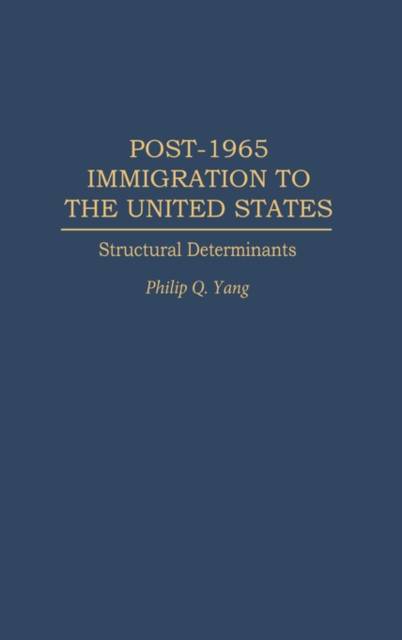
- Afhalen na 1 uur in een winkel met voorraad
- Gratis thuislevering in België vanaf € 30
- Ruim aanbod met 7 miljoen producten
- Afhalen na 1 uur in een winkel met voorraad
- Gratis thuislevering in België vanaf € 30
- Ruim aanbod met 7 miljoen producten
Zoeken
€ 161,45
+ 322 punten
Omschrijving
Why do countries differ substantially in the size of legal permanent immigration to the United States since 1965, even after the repeal of the discriminatory national origins quota system? The author demonstrates that development theory, world system theory and immigrants' social network theory all contain partial truths, but not one of them captures the entire immigration process. Here cross-national differences in the size of post-1965 immigration are shown as the outcomes of multi-dimensional forces, including the source country's development, U.S. involvement in the country, immigrants' resources, and the interactions of these factors. Scholars and readers interested in immigration, demography, sociology, history, international relations, cross-national analysis and social change will find this book an interesting and useful addition to their list of resources.
Specificaties
Betrokkenen
- Auteur(s):
- Uitgeverij:
Inhoud
- Aantal bladzijden:
- 248
- Taal:
- Engels
Eigenschappen
- Productcode (EAN):
- 9780275950019
- Verschijningsdatum:
- 14/02/1995
- Uitvoering:
- Hardcover
- Formaat:
- Genaaid
- Afmetingen:
- 163 mm x 241 mm
- Gewicht:
- 562 g

Alleen bij Standaard Boekhandel
+ 322 punten op je klantenkaart van Standaard Boekhandel
Beoordelingen
We publiceren alleen reviews die voldoen aan de voorwaarden voor reviews. Bekijk onze voorwaarden voor reviews.











